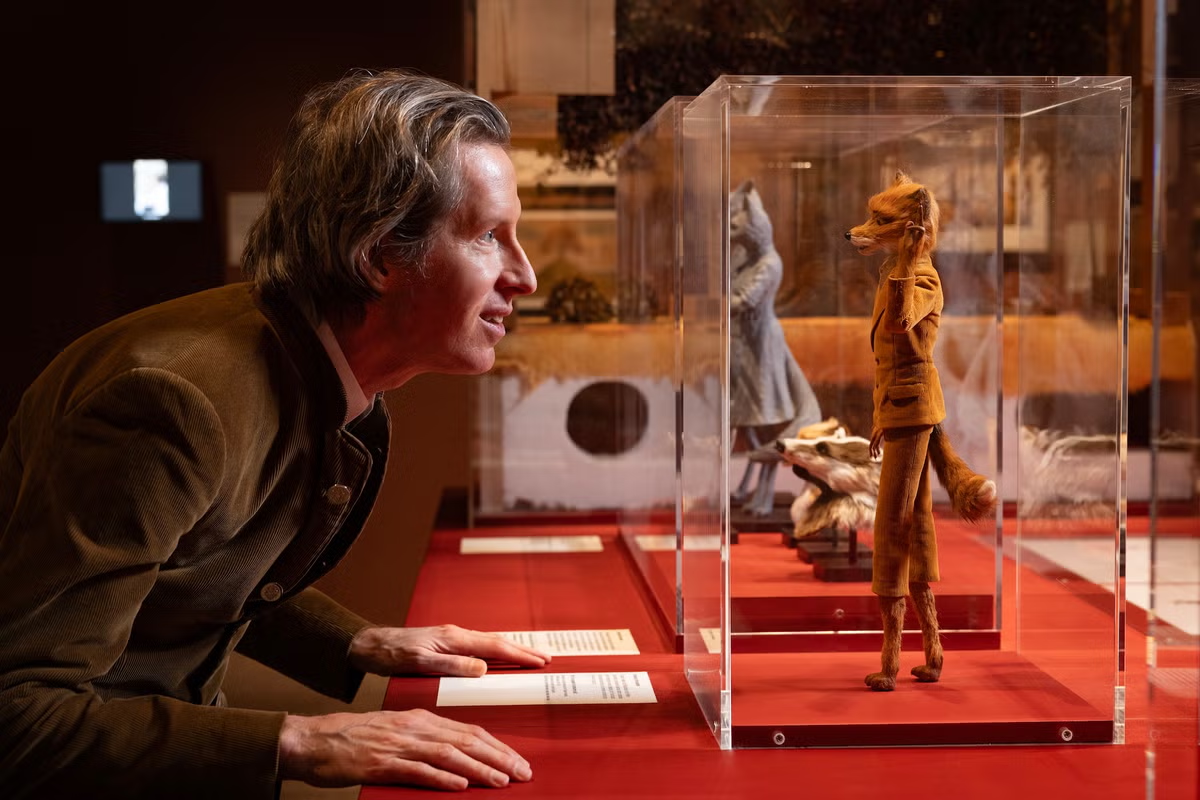The new Wes Anderson exhibition ought to prove his haters wrong

Get the latest entertainment news, reviews and star-studded interviews with our Independent Culture email
Get the latest entertainment news with our free Culture newsletter
Get the latest entertainment news with our free Culture newsletter
In recent years, west London’s Design Museum has enjoyed great success in plumbing the work of cinematic auteurs. In 2019, “Stanley Kubrick: The Exhibition” – a walk through the monolithic filmmaker’s shining career – became the museum’s most attended event in its 35-year history. A show based on the oeuvre of gothic eccentric Tim Burton, launched last October, went on to break that record again. But there is probably no filmmaker alive more uniquely suited to a gallery exhibition than Wes Anderson.
Over the course of his three-decade career, the Royal Tenenbaums filmmaker has perfected a cinema of things – quaint, ornately designed objects, arranged and displayed on screen with curatorial care. Books; paintings; playbills; typewriters; outfits. Even his actors have often been described as things: articulated mannequins to be marshalled within Anderson’s pastel dollhouse sets. In his two stop-motion efforts, 2009’s Fantastic Mr Fox and 2018’s Isle of Dogs, this comparison was literalised. Detractors say Anderson’s films are twee and inhuman, or (that most blunt of criticisms) pretentious. Admirers – and there are fervid ones out there – see a lot more.
At a glance, “Wes Anderson: The Archives”, which showcases hundreds of objects from Anderson’s work, might seem to indulge this idea of the director as objet fetishist. Ever since his second film, Rushmore (1998), Anderson has contractually insisted on being able to preserve the props and costumes for himself, making this collection rich and thorough. There are myriad fascinating miniatures, among them the Grand Budapest Hotel from The Grand Budapest Hotel (2014), an intricate model of the Darjeeling Limited train from The Darjeeling Limited (2007), and the Fantastic Mr Fox puppet from Fantastic Mr Fox.
You see his sensibility evolve and intensify with swelling budgets: while early films such as Rushmore and The Royal Tenenbaums feature more traditional movie props – costumes, behind-the-scenes photographs, journals and production ephemera – his later work explodes with ambition and idiosyncrasy. The section for TheFrench Dispatch (2021) includes 10 huge abstract paintings, weighing 100kg each (painted in the film by Benicio del Toro’s character, and in real life by German-Kiwi artist Sandro Kopp). The section for Asteroid City (2023)features a long run of full-size faux-period vending machines, offering everything from martinis to firearms ammunition. Only The Phoenician Scheme (2025) feels short-changed – presumably for logistical reasons, with it having only come out this year. (The sprawling picaresque film gets just an alcove with a few cabinets of trinkets.)
Focus is kept squarely on Anderson’s work: there is no section devoted to his backstory or his childhood growing up in Houston, Texas, the son of an ad man and a real estate agent. We begin instead with Bottle Rocket, his 1996 debut and first of many collaborations with brothers Owen and Luke Wilson. This portion nonetheless contains some of the more intriguing insights into Anderson’s often obscure inner life. There are his personal notebooks, written in preparation for every film, each bearing fastidiously neat, small handwriting. There is a printed budget for his first film, with a (less neatly) handwritten message to his father. (“This is where your $2,000 went,” he begins.)
And yet it would be too simple to write off this exhibition – and, by extension, Anderson’s films – as simply a cabinet of artisan confections. There is too often a presumption that his obsession with style masks a lack of substance: for the 56-year-old Texan filmmaker, though, style and substance are inextricable. As consistent as his visual aesthetic is his emotional one – nearly all his films comprise dryly comic character studies of damaged, emotionally dysfunctional men. The worlds they inhabit may seem to be neatly choreographed, symmetrical and colour-coordinated, but his characters contradict this artifice. Life, as they say, finds a way. And this may well be the unifying irony of Anderson’s films.
Wes Anderson poses with a miniature of the Grand Budapest Hotel from his 2014 film (Matt Alexander)
Of course, being an assemblage of collected things, “Wes Anderson: The Archives” does not feature this essential ingredient – the human element. It does, however, try to approximate it via video screens playing excerpts from the films in question, as well as some behind-the-scenes footage. (One particularly endearing video shows Anderson personally demonstrating character movement for animators on Fantastic Mr Fox.)
Ironically, looking at these actor-less costumes and inert puppets, you can’t help but feel a renewed appreciation for the movement in Anderson’s films, for the oddness and personality that only humans can bring. Anderson is more than his aesthetic, more even than his impeccable craft – though as this exhibition shows, that craft is a marvel in itself.
‘Wes Anderson: The Archives’ is at the Design Museum until 26 July; tickets here





